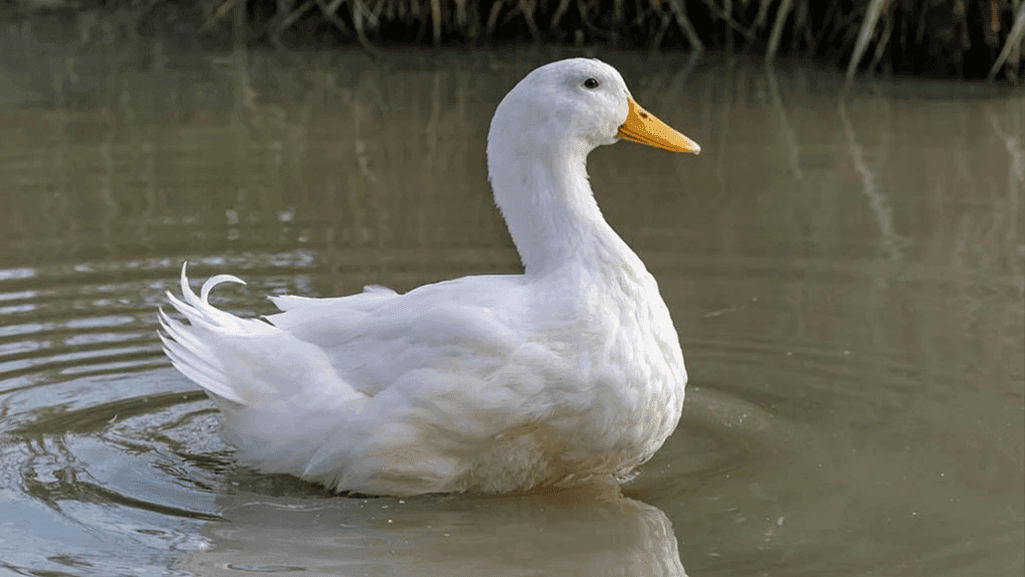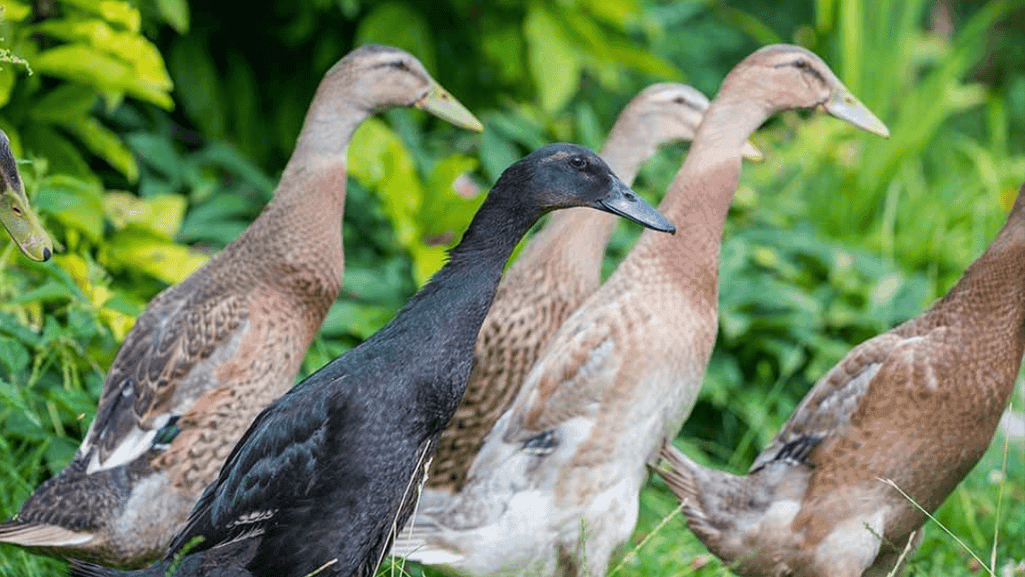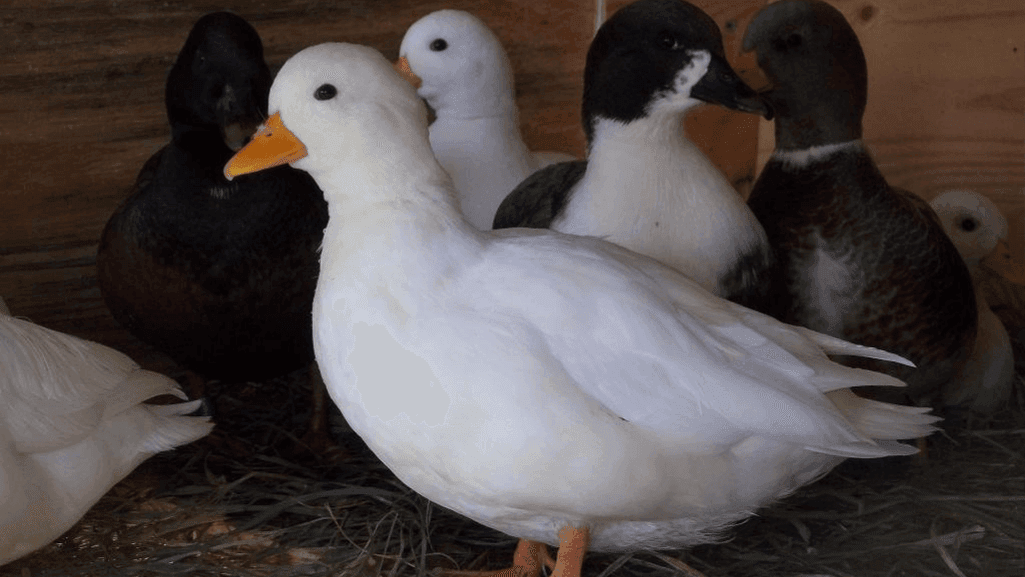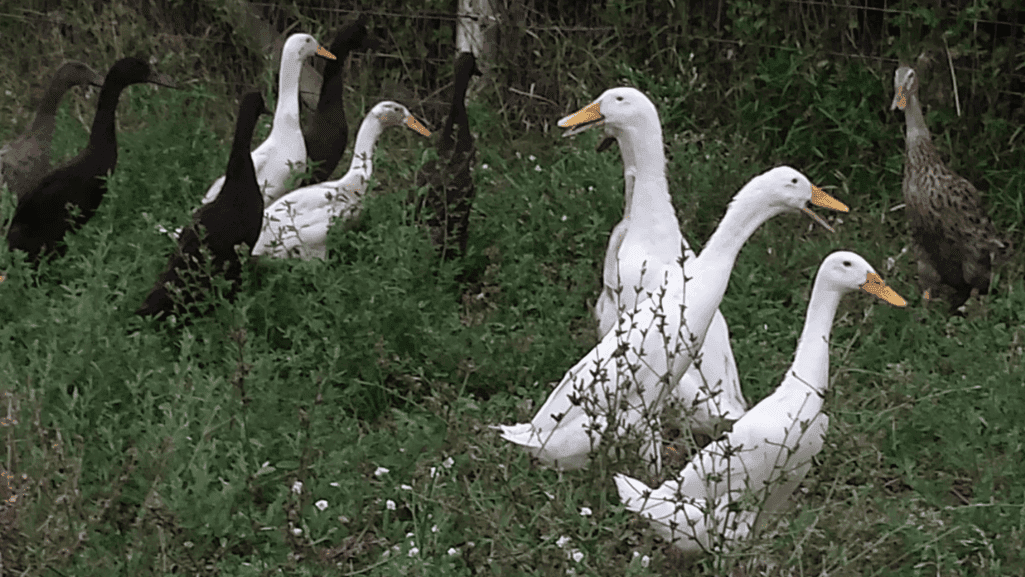Explore the magical world of black and white duck breeds. These birds, from the classic Magpie to the Ancona, are perfect for anyone. They are great for both new and seasoned duck lovers. Find your perfect feathered friend from our wide selection of backyard duck breeds.
Black and white duck breeds are a sight to behold. They add elegance to any space. With over 61 varieties, they come in all sizes, patterns, and personalities. Whether you love the Magpie’s spots or the Runner’s grace, there’s a duck for everyone.
These ducks are not just beautiful. They also bring many benefits. Breeds like the Pekin and Muscovy are great for eggs and meat. The Call duck, with its small size and friendly nature, is perfect for families.
Key Takeaways
- Over 61 different black and white duck breeds to choose from
- Stunning contrasts and unique personalities make these breeds stand out
- Perfect for both novice and experienced duck enthusiasts
- Breeds like Pekin and Muscovy offer excellent egg production and meat quality
- Call ducks are ideal pets for families due to their small size and friendly nature
Introduction to Black and White Duck Breeds
Choosing a black and white duck breed requires knowing their unique characteristics. These include size, temperament, and egg-laying abilities. Understanding these traits helps you pick the right breed for you.
Importance of Breed Characteristics
Each black and white duck breed has its own special traits. For example, Muscovy ducks are big and great for meat. Indian Runner ducks, on the other hand, lay lots of eggs. Knowing these traits is key to finding a breed that fits your needs.
Overview of Popular Choices
Here are some top black and white duck breeds:
- Muscovy ducks: Known for their large size and excellent meat production.
- Indian Runner ducks: Prized for their prolific egg-laying abilities, producing up to 300 eggs per year.
- Magpie ducks: A captivating breed with distinctive black and white plumage, as highlighted in this in-depth guide on Magpie Ducks.
- Ancona ducks: Medium-sized birds weighing between 2 and 2.5 kg on average, believed to have originated in the Italian region of Ancona.
- Saxony ducks: A relatively new breed developed in Germany, known for their excellent egg production and meat quality.
Learning about each breed’s unique characteristics helps you make a smart choice. This ensures you find a breed that meets your needs and preferences.
Pekin Ducks
Pekin ducks are loved for their unique look and friendly nature. They are the most popular duck breed in the U.S. With tens of millions in the country, they are famous for their meat.
Characteristics and Appearance
Pekin ducks stand out with their big size and white feathers. They have orange bills and feet, which look great against their white plumage. The Jumbo Pekin Ducks can weigh between 9.00 and 13.50 lbs.
Their history goes back over 4,500 years. They were around before 2500 BC.
Temperament and Behavior
Pekin ducks are calm and friendly. They are easy to handle, perfect for beginners. They love being around other ducks and people.
“Pekin ducks are the perfect addition to any backyard flock. Their gentle nature and stunning appearance make them a joy to raise.”
Uses of Pekin Ducks
Pekin ducks are mainly raised for meat. But they also lay eggs, from 50 to 300 per year. This makes them great for both meat and eggs.
Some people keep them as pets. They love their charming nature and beautiful looks.
The Pekin duck breed has a long history in the U.S. They were first brought here in 1873. In 1874, they were recognized by the American Poultry Association. Long Island, mainly Eastern Long Island, was once a big place for Pekin duck farms. But, the number of farms has dropped a lot.
Indian Runner Ducks
Indian Runner ducks are a unique breed known for their special traits and egg-laying skills. They are slender and stand upright, making them popular among duck lovers and backyard farmers.
Unique Physical Traits
Indian Runner ducks are known for their tall, upright posture. They can grow up to 21 to 26 inches tall. Their long necks and slender bodies make them look elegant.
They come in many colors, like black, white, and fawn. Some have special patterns, like the Cayuga duck, which has green-black feathers.
Behavior and Socialization
Indian Runner ducks are active and love to be around others. They need lots of space to roam and forage. They enjoy finding insects and slugs to eat.
They are friendly and get along well with other birds. This makes them great for backyard flocks.
“Indian Runner ducks are not only beautiful but also have a calm and friendly temperament, making them a joy to raise and observe.”
Egg Production
Indian Runner ducks are amazing egg layers. They can lay 200 to 300 eggs a year. Their eggs are big and taste great.
They lay eggs for 4 to 5 years before slowing down. This makes them perfect for those who want to raise ducks for eggs.
- Indian Runner ducks can live up to 8 to 12 years with proper care.
- They reach a mature weight of around five pounds.
- Indian Runner duck eggs are prized for their size and flavor.
Indian Runner ducks are special because of their looks, friendly nature, and egg-laying skills. They are a favorite among duck lovers everywhere. Their history and qualities make them a beloved choice.
Muscovy Ducks
Muscovy ducks are unique and fascinating. They have a striking appearance and a friendly personality. These large ducks come from South America and are found in many places, including Russia.
Identification of Muscovy Ducks
It’s easy to tell Muscovy ducks apart because of their unique features. Adult males have big white patches on their wings. They can also be white, pied, buff, brown, chocolate, lilac, or blue.
One key feature is their red facial skin with warts. This makes them stand out from other ducks.
Personality and Interactions
Muscovy ducks are calm and friendly. They are great for families with kids. They are quiet and not usually aggressive, except when they’re breeding.
Males make a hissing sound, and females have a special “pip” call. They usually only breed with other Muscovy ducks. But, they can also breed with other ducks, and their babies might not be able to have babies themselves.
Advantages of Muscovy Ducks
Muscovy ducks have many benefits. They are good flyers and like to roost in trees. They can have many babies, with some hens having multiple broods a year.
They are great at controlling pests by eating flies, maggots, mosquitoes, spiders, and other insects. Their meat is lean and healthy, with almost no fat. Their manure is also good for gardens.
Fun fact: Muscovy duck eggs take 35 days to hatch, longer than other duck breeds.
Call Ducks
Call ducks are a delightful and popular breed known for their small size and vibrant personalities. They come in many colors, like black, blue, gray, pastel, snowy, penciled, and white. This makes them a beautiful addition to any farm or backyard.
Size and Color Variations
Call ducks are the smallest domestic duck breed, weighing less than 2 pounds. They have a wide range of colors, including black, blue, gray, pastel, snowy, penciled, and white. These colors make them stand out.
Black call ducklings were available from December to early April. White call ducklings were also available during this time. The availability of blue, gray, pastel, penciled, and snowy call ducklings was not mentioned.
Personality Traits
Call ducks are known for being friendly and social. They are the loudest duck breed, with females having the loudest voices. Despite their loudness, they are good mothers and broodies.
Customer reviews praise the cuteness and colors of call ducks, with an average rating of 4.9 out of 5 stars. Many customers are happy with extra ducklings from breeders like Metzer Farms.
Care Requirements
Call ducks need proper care to stay healthy. They require a balanced diet, clean water, and a safe enclosure. Their small size makes them vulnerable to predators, so their enclosure must be secure.
Call ducks lay 25-75 eggs per year, with some not laying at all. Their eggs are small and off-white to pale blue or green. They lay only in spring. With proper care, they can live up to 10-15 years, longer than many other duck breeds.
Runner Duck Breeds
Runner ducks, also known as Indian Runner ducks, are loved by many. They stand tall, have slender bodies, and lay lots of eggs. Let’s explore the different Runner duck breeds and what makes them special.
The history of Runner ducks goes back to the 19th century. They were first shown at the Dumfries Show in Scotland in 1877. In 1898, they were accepted into the American Standard Registry. Today, there are 8 color varieties recognized in the American Standard of Perfection, and 14 in the British Waterfowl Standard.
Overview of Runner Variations
Runner ducks come in many colors and patterns. Some popular ones include:
- Fawn and White
- White
- Black
- Chocolate
- Blue
- Trout
Breeders keep different pens for different colors. For example, to get Blue birds, they use Black males on Silver females and Silver males on Black females.
Trait Differences in Breeds
Runner ducks share some traits like standing tall and foraging well. But, each breed has its own look. They all lay a lot of eggs, with some strains laying over 250 eggs a year.
Indian Runner ducks are not broody and lack strong maternal instincts, making them ideal for egg production.
Popularity Among Farmers
Runner ducks are popular among farmers for their adaptability and egg-laying. Customers who bought Black Runner Ducks from Metzer Farms gave them a 4.8 rating. They praised their health and vitality.
The Livestock Conservancy works to save heritage breeds like Runner ducks. They started in 1977 and have saved many breeds from extinction. Their work shows how much people value these ducks.
Caring for Black and White Duck Breeds
Black and white duck breeds, like Pekin, Indian Runner, and Muscovy ducks, are loved by many. They have a unique look and are very productive. It’s important to give them a good home and care for their health.
Ideal Habitat and Environment
Ducks need a clean place to swim and drink. They must have a safe spot to hide from bad weather and predators. Ducks should have about 4-6 square feet inside and 10-15 square feet outside.
They also need shade and places to forage for food. This is key for their happiness and health.
Feeding Requirements
Ducks need a diet that’s just right for them. Ducklings start with a special feed that has 20% protein. As they get older, they move to a different feed.
It’s best to give them food made just for ducks. They also need fresh greens, insects, grit, and crushed oyster shells. This helps with digestion and makes their eggs better.
Health Considerations
Keeping ducks healthy means regular vet visits and keeping things clean. Ducklings need to be warm at first, then cooler as they grow. They need more space as they get bigger.
Ducks do best in groups, with at least three together. With the right home, food, and care, black and white ducks can be happy and healthy for a long time.












